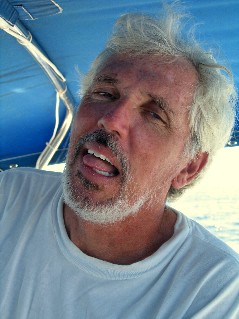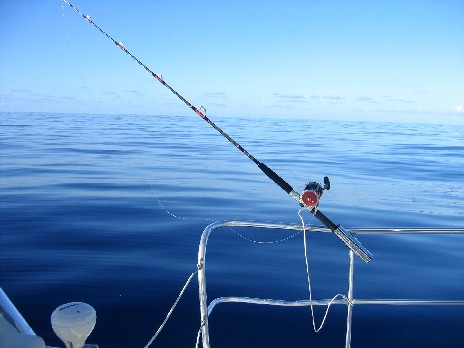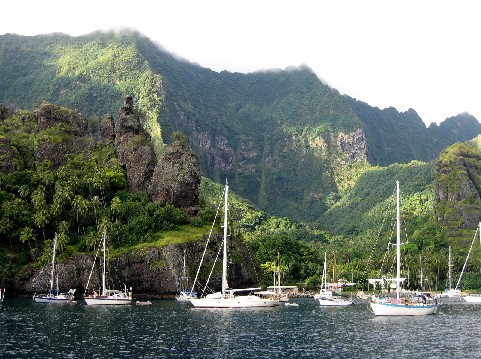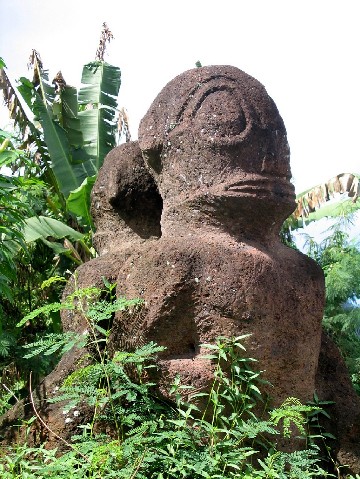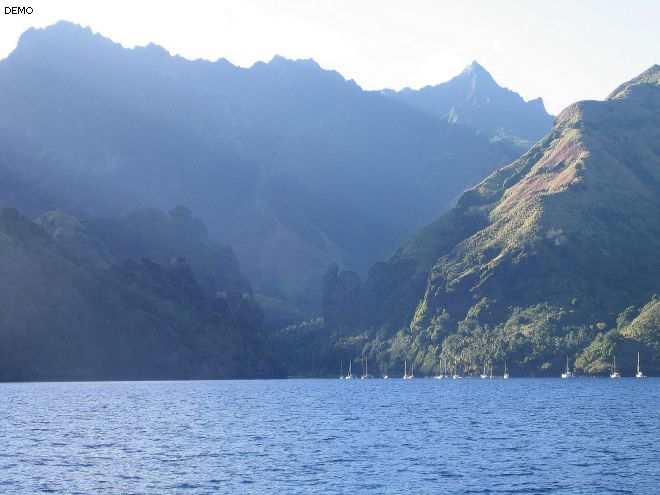|
| |||||||||||||||
| |||||||||||||||
|
16 May 2006
Marquesas Islands - Te Henua Enana (The Land of Men)
29 Days Enroute
"We're conquering time, do you see, Ned? What do all people in the real world, the world outside this wicked island, regard as the most precious commodity known to them? Time, time, the old enemy, they call it. What do you hear again and again? If only I had more time. Had we but world enough and time. There's never enough time. I never had the time to learn music, to enjoy life, to find out the names of the stars in the sky, the planets of the earth, the birds of the air. I never had time to teach myself Italian. There's no time to think. How can I possibly find the time to do that? I never found the time to tell her that I loved her."
"And all we have, you and I, is that very thing, time, and if we look on this as the most magnificent gift afforded to mankind, then we can see that in this place we are one with Augustine in his cell and Montaigne in his tower. We are the chosen, the privileged. We have what the richest man on earth most covets and can never buy. We have what Henri Bergson saw as God's chief instrument of torture and madness. Time. Oceans of time to be and become."
Revenge by Stephen Fry
Nuf said
Well maybe we ought to say a little more. The first part of the trip which is near the equator was void of wind and most boats we were in contact with did a little motoring. After you get underway and away from the Galapagos you have three choices. Dive south to try and catch stronger trade winds which might also mean catching a lot of convection and thunderstorms, stay north which many times brings good wind depending on the location of the ITCZ or three follow the direct rumb suggested by Jimmy Cornell which was our choice. During our passage this middle route had the least wind. But hey we are sailors and we had planned on 30 days. One boat we know took 39 days but you know they were pleased with the passage and enjoyed the time more that most. There were other boats who sped through the crossing making the trip a race. But for the most part everyone has a successful trip and there were no prolonged gales or long periods of bad weather. In fact we chased squalls knowing they would give us a good blow albeit for only a short time.
If you're interested, here are some suggestions that may speed up your journey. First a spare crew member who knows what they are doing makes sail changes easier and of course spaces out the watch pattern. Second, a sail plan for downwind and light winds makes a lot of difference. If you have enough sail and crew or the "want to" to change sails frequently you will definitely go faster. And lastly weight. Of course a lighter boat will sail faster but you will eventually pay for the lack of inexpensive provisions forgone in Panama - so you see it is all a trade off. But this journey is definitely not all about speed. We were told by several other cruisers that they didn't even check into the net because they felt the pressure of telling how many miles to go knowing that everyone listening was figuring out from the prior days info how may miles you made the past 24 hours. Now how's that for having time on your hands! But in a way it does seem like a race because you just can't help thinking "Wow that boat was 50 miles behind us and now they are 12 miles ahead of us, wonder what their length is, wonder what sail configuration they have, wonder how much diesel they consumed, etc.. Don't get caught up in all of that. Just kick back and do some things that are on your "to do" list or read some of those books that you have been meaning to get around to. Carpi diem.
During the twenty-nine days we saw a pod of blue whales, several herds of pilot whales, numerous schools of dolphin, two fishing boats, one freighter and one fellow cruiser as he passed us by. As for fishing we had very limited success and the most hits were on the homemade lures from Rene's workshop.
We participated in two different radio nets during this peak of the season so we heard communication from about 50 boats making the passage. These nets are invaluable and are organized to provide a degree of safety and camaraderie for the passage. They welcome any boat to join with the intent of recording your position and the weather pattern which can be used by the boats in your wake. There is no chit chat on the net and it moves along quickly. Some nets report once a day, others twice. There were some problems along the way and all of them dealt with in a very professional manner. One boat manned by a couple actually had to evacuate the husband due to illness and the other cruisers did an excellent job with medical advice, communications and encouragement. The transfer to a French freighter with a doctor aboard was accomplished late one night and another boat left the Marquesas to rendezvous with the now shorthanded vessel bringing fuel and crew.
Besides this rather dramatic rescue other less significant things did go wrong. One boat lost a shroud, one a propeller, a spinnaker drug a crew member overboard for a short period, one lost a grill, some broke turnbuckles, a couple broken relationships, two had the clew of their sail fail, several tore their spinnaker not from the howling winds but rather from problems encountered from raising and lowering , and there were many other events or equipment failures that we missed or were not reported. Two boats actually touched in the middle of a moon lit night. So much for good boat watch. For Shiraz, we suffered from line and sail chafe. Everyday it was important to look at every line and sail for the appearance of wear. Our lack of experience in sailing downwind required this diligence. We moved a few things and put on some more chafe protection (read duct tape). After about ten days it was apparent that our bottom was becoming fouled and it was costing us speed. It grew worse and worse until finally after 28 days we were 40 miles out and completely becalmed, we took the opportunity to jump into the 3000 foot deep water and scrap the goose necks off the bottom. These slimy creatures adhered to everyone's bottom regardless of the type of paint or the vintage. In Fatu Hiva it took a full day to remove the rest and another two days to clean the freeboard.
Fatu Hiva is the southern most island of the Marquesas and became our first stop. It does not have customs and immigration and the cruising guides warn you that there may be a fine if you stop prior to checking in. The cruisers that arrived in Fatu
The Marquesas are truly off the tourists path but not so in terms of the spread of civilization in the South Pacific . According to the latest theories the Marquesas Islands are the geniuses of Polynesian society since it is believed that the rest of Polynesia was settled from the Marquesas. Early explorers tells that fierce warrior colonies populated these islands and were reported to partake of the "long pig" which means they were cannibalistic. Their has been a revival of the art of tattooing and more than a few cruisers we know record this memorable landfall with a small tattoo. Unlike in the US where tattoos take the form of cartoon characters or cliques the locals have very elaborate tattoos that are truly art work covering a significant portion of their body. The rugged landscape of steep ridge lines are covered with beautiful green tropical vegetation and many think they are the most beautiful islands in the Pacific. There are 15 islands in the total archipelago with only six being inhabited. The total population today is around 8,000. Paul Gauguin's final resting place is Hiva Oak where he lived the last few years of his life and in 1846 Herman Melville spent four months on Nuku Hiva and wrote the book Typee about his experiences. These two artists were among the first to inspired the rest of the world to discover the exotic beauty of the South Pacific.
We left Fatu Hiva before we were asked and headed to the island of Tahuata were we anchored in Baie Hapatoni. The bay's concrete wharf made for easy access to the small village where we found several restored archeological sites within easy walking distance. Next we headed to Nuka Hiva to start the official procedure of checking in. This island is about 80 miles north so we decided on an overnight sail. Just out of the bay The Marquesas have never been fully excavated so in remote areas there are numerous archeological sites full of sculptors and carvings and ceremonial plateaus. You might also spot them in some of the oddest places. This one was on the side of the road walking to the hardware store. It is a carving of a man and woman sitting, back to back. Nuka Hiva has an apt infrastructure with a hospital, post office, schools, churches, heliport and good roads. There are several small stores with grocery and hardware items but believe what you read about the South Pacific being expensive. The only thing that we have found that is not expensive are the French baguettes, costing about $.50 each. The baguettes are kept in a burlap sack on the grocery store counter. You can get butane at the hardware store which will substitute for propane. Fresh vegetables are very expensive. We bought a head of cabbage, two cucumbers, and a small bag of tomatoes for about $18 US. Every Saturday morning there is a fresh vegetable market at the dinghy dock from 4:30 a.m. to 6:00 a.m. but so far we haven't gotten up that early to attend. We are now sitting and waiting for some wind to proceed to the Tuamotu Islands.
Additional Photos if you like. Remember click on the arrow to start and the square to stop.
If you're headed that way:
| |||||||||||||||

